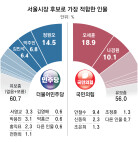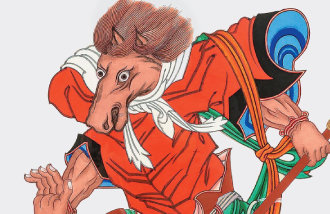[Opinion] The Palace Becomes a Place for Fighting between Concubines
[Opinion] The Palace Becomes a Place for Fighting between Concubines
Posted November. 12, 2001 09:15,
On TV these days, historical dramas are all the rage. With dramas such as `Yeoin Chunha`, `Myoung Sung Hwang Hoo` and `Sang Do` historical dramas seem to have entered a golden age. All the ferment of history in the media may sound like music to a historian`s ears, but the fact is I am absolutely opposed to it. Even university professors are urging that we learn our history from these dramas, but much of these shows actually distort some of the history.
It is not possible to recreate exactly a world we have never known through historical research. Historical materials have survived by chance. It is not the case that these materials are available for us at any time to answer our request. Historical dramas, therefore, necessarily employs the imagination, creating fictional characters or portraying events that did not actually happen for greater dramatic effect.
We can excuse these things as necessities in refining the story or generating greater interest. Unwitting distortions during historical research are also understandable. The thing that I cannot stand is when they positively reject the historical facts and create a different world all together.
Portraying, for instance, a power struggle between women in those times in a way that exceeds the struggles that go on in modern capitalist society, or centering the story on fights over succession and making the royal palaces a fighting ground between concubines scheming to curry the king`s favor instead of exploring the intricacies of national problems such as trade and political challenges, all of these things leave me speechless.
Consequently, kings who are the principle figures in leading the nation are judged poorly. Choong Chong, who was praised as the Restorer, is portrayed as a wrathful king who lashes out at others in anger, while Kojong has become a weakling who profusely apologizes to his wife, Queen Min.
Of course, what woman would not want their own child to succeed the king, but those concubines who pushed that agenda to an unreasonable degree have all disappeared through the back alleys of history. In contrast, the seven concubines (except Chang Hee Bin) who silently kept their place in the palace, anticipated the future days, and finally put their own children in the succession ranks are memorialized. Their resting place is the Seven Palace. Chronological order of the seven palaces is Chu Kyoung Koong, Dae Bin Koong, Yook Sang Koong, Yeon Ho Koong, Sun Hee Koong, Kyoung Woo Koong, and Duk Ahn Goong.
Chu Kyoung Koong is the place where King Injo, grandson of Sunjo by a concubine, kept the ancestral shrine for his mother Kim after he became king and posthumously crowned his father Chung Won Koon as Won Jong.
Dae Bin Koong has the shrine of Kyoungjong`s mother, Chang of Hee Bin, while Yook Sang Koong has the shrine of Youngjo`s mother, Choi of Sook Bin. Both women were Sookjong`s concubines.
Yeon Ho Koong is the resting place of Jinjong`s mother, Lee of Chung Bin. Sun Hee Koong is the resting place of Changjo`s mother, Lee of Young Bin. Jinjong died as Crown Prince but the tragic death of Changjo led to the crowning of Chungjo. The two women were Youngjo`s concubines. Kyoung Woo Koong houses the shrine of Soonjo`s mother, Park of Soo Bin, while Duk Ahn Koong houses the shrine of Um of Gwibi, mother of Young Chin Wang and Kojong`s concubine.
Although these seven palaces were originally scattered in various places, they were built into one complex in 1908. One suspects that this consolidation was motivated not by the royal palace foreseeing the difficulties lying ahead, but rather by the Japanese colonial resident-general who was after the wealth of the palace. The palace is situated west of the Blue House and has been surrounded by unkempt grass and weeds, feared by guards as a dwelling place for ghosts. Now the palace has been cleaned and touched up for its public opening in one week, a truly joyful event. In 1968, the Seven Palace was shut down due to security measures around the Blue House so that even joint ancestral memorial services were prohibited and the grounds left without maintenance. Its renovation and reopening feels like a huge release to a researcher like myself on the level of cultural preservation.
The site must now be correctly maintained and the ancestral and guardian deity shrines cared for in order that the environment is not ruined. The scrupulous care of those managing the site is not even a question. I hope that the visitors will respect the site as a place to learn history and not misuse it as a playground.
Chung Ok-Ja (Seoul National University, Professor of Korean History, Director of Kyu Jang Kak Collection, Guest Editorial Writer)




![“작년에 얼린 떡으로 떡국 No!”…냉동 떡 2달 지나면 버려야 [알쓸톡]](https://dimg.donga.com/c/138/175/90/1/wps/NEWS/IMAGE/2025/12/31/132975107.3.png)


